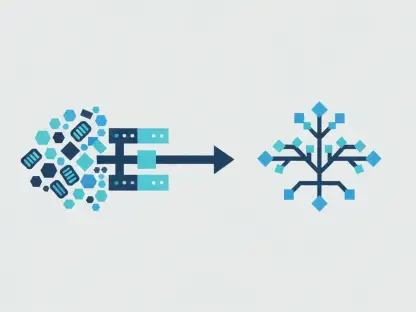The biopharma industry stands at a transformative juncture as it reflects on the achievements of the past year and anticipates the evolving client requirements that will shape 2025 and beyond. Key insights from Subodh Deshmukh, CEO of Aragen Bioscience, highlight the crucial areas of focus for contract development and manufacturing organizations (CDMOs) to stay ahead in this dynamic landscape. The primary question remains whether CDMOs are investing sufficiently in the right skills, manufacturing equipment, and cutting-edge technologies necessary to support the next generation of drugs.
Over the past year, the biopharma sector has exhibited a mix of resilience and transformation. The industry has maintained robust and steady development in small molecules, while biologics have continued to innovate remarkably, with democratized manufacturing capabilities extending to newer global regions. However, advanced therapies such as cell and gene therapies have encountered significant challenges, grappling with issues related to affordability, funding pressures, and scalability.
Shifting Focus in Biologics
In the field of biologics, the focus is shifting from merely achieving therapy approvals to reducing production costs and improving accessibility. Historically, manufacturing costs of around $100 per gram were considered efficient for biologics production, but now there is a growing drive towards achieving costs closer to $50 per gram. This shift is propelled by both CDMOs and their clients aiming to remain competitive. Concurrent with cost reduction efforts, there is a rapid emergence of highly targeted and efficient biologics, such as third-generation antibody-drug conjugates (ADCs) and bispecific/trispecific antibodies. These technologies enhance therapeutic precision, improving disease targeting while minimizing off-target effects, thereby offering significant clinical benefits.
Noteworthy also is the transformative impact of GLP-1 drugs, recognized primarily for their role in weight management. However, the rise of peptides and oligonucleotides deserves attention as these molecules show extraordinary promise across a range of serious medical indications, including oncology, cardiovascular diseases, and rare genetic disorders. This expanding therapeutic scope positions these modalities as crucial drivers of future innovation. As the biopharma landscape evolves, the need for scalable, cost-effective, and accessible biologic therapies becomes increasingly critical, fostering a competitive environment driven by technological advancements and strategic collaborations.
Advancements in Bioreactor Technology
Examining the newer technologies and manufacturing techniques, bioreactor technology, for instance, is evolving. Traditional fed-batch processes for monoclonal antibodies (mAbs) are being replaced by intensified processes like N-1 perfusion and continuous manufacturing. These approaches significantly reduce cycle times, enhance yield, and maintain product quality. By 2025, intensified manufacturing is expected to become the norm for most biologics production, with tailored reactors for newer biospecific antibodies incorporating advanced systems specific to the molecule of interest. Technologies such as single-use bioreactors, membrane chromatography, and hybrid upstream-downstream systems are anticipated to contribute to cost reductions and improved production efficiencies.
For emerging formats such as bispecific and trispecific antibodies, tailored bioreactor systems are increasingly pivotal. These systems optimize yields and purity for complex molecules by incorporating advanced chromatography techniques, next-generation resins, and specialized membranes. Similarly, ADC manufacturing will benefit from new approaches, such as cleavable linkers and site-specific conjugations that improve drug-to-antibody ratio (DAR) uniformity. Companies are creating facilities that integrate payload development, conjugation, and bioassay validation, enhancing operational efficiency, minimizing delays, and accelerating time-to-market while ensuring consistent production.
Further advancements in methodologies like tangential flow filtration (TFF) and advanced chromatography will play a key role in ensuring the consistency, quality, and patient safety of ADCs by effectively separating them from impurities.
Sustainability in Biopharma
Sustainability is becoming a defining theme in the biopharma industry. Environmental considerations now significantly influence operations, with companies striving for energy-efficient manufacturing processes, reducing plastic consumption in single-use technologies, and adopting green chemistry principles in synthesis. By 2025, regulatory requirements and consumer demand are expected to accelerate the push towards carbon-neutral operations, particularly for large-scale biologics production. Sustainability is seen not only as an environmental responsibility but as a competitive differentiator that aligns business success with societal impact.
Organizations are increasingly investing in renewable energy and energy-efficient processes to minimize environmental impact, aiming to craft compelling narratives that attract investors. Companies are transforming their operational models, incorporating sustainability metrics into their core strategies to ensure long-term viability in an evolving regulatory landscape. This green shift is expected to drive significant innovation in biopharma manufacturing, with companies adopting cleaner technologies and improving waste management practices.
The commitment to sustainability also extends to supply chain management, where firms are assessing environmental impacts across the entire supply chain to ensure responsible sourcing and reduced carbon footprints. The momentum towards more sustainable biopharma operations is likely to influence future regulatory frameworks, incentivizing green practices and encouraging industry-wide collaboration towards a more sustainable future.
Supply Chain Resilience
A renewed focus on supply chain resilience has emerged as a critical lesson from recent years. Geopolitical tensions, trade restrictions, and pandemic-like disruptions have exposed vulnerabilities within global supply networks. In response, companies are diversifying their supply chains, implementing dual-site production models, and balancing innovation hubs in developed markets with cost-efficient manufacturing capabilities in emerging economies. This strategic shift mitigates risks, enhances business continuity, and ensures better preparedness to navigate unpredictable geopolitical landscapes. Despite remarkable successes with monoclonal antibodies (mAbs) and other biologics, the biopharma industry faces ongoing challenges with newer modalities like cell and gene therapies. Eight years after the first CAR-T therapy approval, manufacturing costs and scalability issues persist, hindering widespread adoption.
Supply chain resilience is also being addressed through digital transformation initiatives, integrating data-driven approaches to enhance supply chain transparency and predict potential disruptions. Advanced analytics, blockchain technology, and artificial intelligence (AI) are being leveraged to provide real-time insights, streamline operations, and ensure traceability throughout the supply chain. By adopting these technologies, biopharma companies can better anticipate and respond to supply chain challenges, ensuring timely delivery of critical therapies to patients worldwide.
Furthermore, collaborations between industry stakeholders, including regulatory agencies, are essential to establish standardized protocols and best practices to strengthen supply chain resilience and ensure the continuous availability of life-saving biopharmaceuticals.
Accelerating Development Timelines
The biopharma industry is at a pivotal moment as it assesses the accomplishments of the past year and anticipates future client demands that will define 2025 and beyond. According to Subodh Deshmukh, CEO of Aragen Bioscience, CDMOs must focus on key areas to stay ahead in this dynamic field. Essential questions arise about whether CDMOs are adequately investing in the necessary skills, manufacturing equipment, and advanced technologies to support the development of next-generation drugs.
Over the past year, the biopharma sector has shown a blend of resilience and transformation. The industry has displayed strong and steady progress in small molecules, while biologics have continued to innovate significantly, with democratized manufacturing capabilities spreading to newer global regions. Nonetheless, advanced therapies like cell and gene therapies have faced substantial challenges, including issues related to affordability, funding pressures, and scalability. Addressing these challenges will be crucial for the future success of the biopharma industry.









